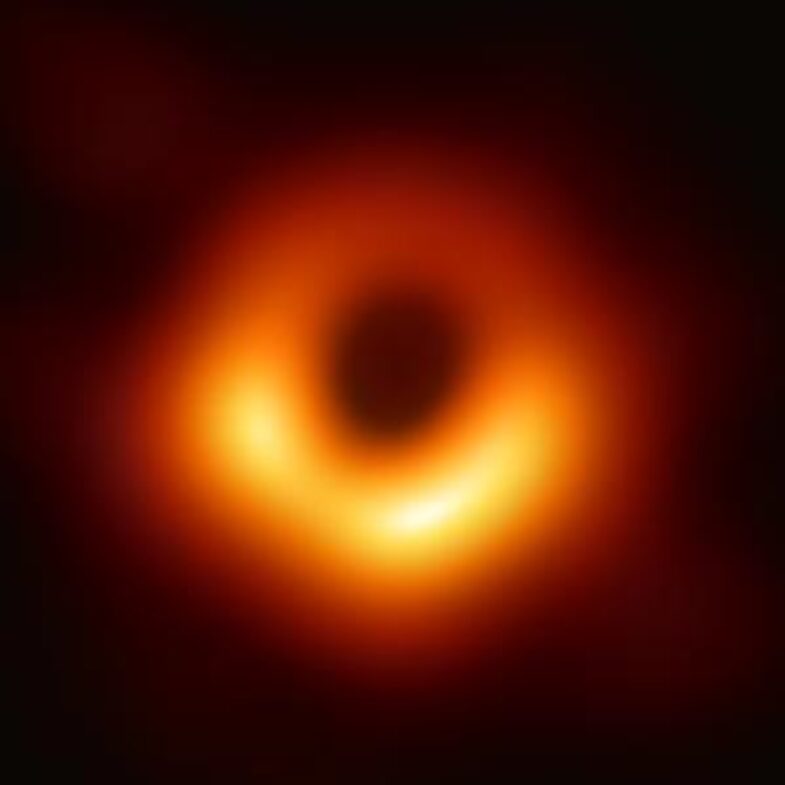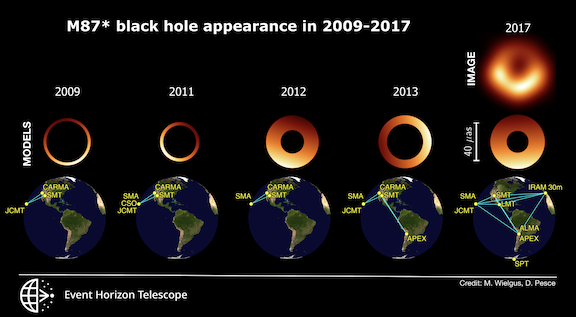
Black hole shadow wobbling

In 2019, the Event Horizon Telescope (EHT) Collaboration, including a team of MIT Haystack Observatory scientists, delivered the first image of a black hole, revealing M87*—the supermassive object in the center of the M87 galaxy. The EHT team has used the lessons learned last year to analyze the archival data sets from 2009–2013, some of which were not published before. The analysis reveals the behavior of the black hole image across multiple years, indicating persistence of the crescent-like shadow feature, but also variation of its orientation—the crescent appears to be wobbling. The full results appear today in The Astrophysical Journal (Wielgus et al., “Monitoring the Morphology of M87* in 2009–2017 with the Event Horizon Telescope”).
The EHT is a global array of telescopes, performing synchronized observations using the technique of Very Long Baseline Interferometry (VLBI). Together they form a virtual Earth-sized radio dish, providing a uniquely high image resolution. In 2009–2013, M87* was observed by early-EHT prototype arrays, with telescopes located at three geographical sites in 2009–2012 and four sites in 2013. In 2017, the EHT reached maturity with telescopes located at five distinct geographical sites across the globe.
Data sets for this research were fully correlated at MIT Haystack Observatory. The 2009–2013 observations consist of less data than the ones performed in 2017, making it impossible to create an image. But the EHT team was able to use statistical modeling to look at changes in the appearance of M87* over time. In the modeling approach, the data are compared to a family of geometric templates, in this case rings of non-uniform brightness. A statistical framework is then employed to determine if the data are consistent with such models and to find the best-fitting model parameters.
“This is a beautiful example of creative data analysis. Extracting important new astrophysical understanding and squeezing new insight out of previous observations is an imaginative example of how scientists can maximally use the information content of such painstakingly collected data,” said Colin Lonsdale, director of MIT Haystack Observatory and chair of the EHT Collaboration Board. “The behavior of this event horizon scale structure over a period of years allows important additional constraints to be placed on the properties of this fascinating object.”
The full press release is available at MIT News.